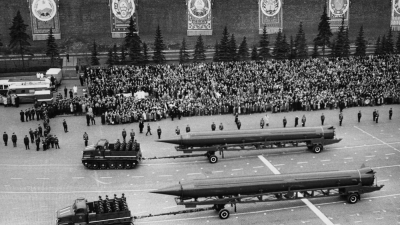
 The civil war in Sudan – a conflict between Muslims and Christians, Arabs and Africans, or North and South – has claimed two million lives. The civilian death toll is one of the highest of any war since World War II. Religion, ethnicity, and regional issues were the key factors responsible in the early days of the conflict. However, the recent reasons are based on economic lines. Ecological problems, scarcity of resources, and the drought made the situation worse. A Comprehensive Peace Agreement was signed in 2005 in Nairobi between the rebels and the government to end the conflict.
The civil war in Sudan – a conflict between Muslims and Christians, Arabs and Africans, or North and South – has claimed two million lives. The civilian death toll is one of the highest of any war since World War II. Religion, ethnicity, and regional issues were the key factors responsible in the early days of the conflict. However, the recent reasons are based on economic lines. Ecological problems, scarcity of resources, and the drought made the situation worse. A Comprehensive Peace Agreement was signed in 2005 in Nairobi between the rebels and the government to end the conflict.
[custom_search_and_filter]



 Every war has a reason. The causes of wars include conquest, freedom, or religion. The conflicts in the Middle East as well as the wars in Iraq are good examples of this. One of them started in 2003 with the Iraqis gaining freedom from their dictator. In the civil wars, such as those in Sudan, which often resulted in large famines, the issue was mostly the inequalities in the society. Since September 11, 2001, a new form of war – war against international terrorism – has come up.
Every war has a reason. The causes of wars include conquest, freedom, or religion. The conflicts in the Middle East as well as the wars in Iraq are good examples of this. One of them started in 2003 with the Iraqis gaining freedom from their dictator. In the civil wars, such as those in Sudan, which often resulted in large famines, the issue was mostly the inequalities in the society. Since September 11, 2001, a new form of war – war against international terrorism – has come up.  Many of the 15 republics of the Union of Socialist Soviet Republic (USSR), had been forced to merge with the Soviet state when it was made in 1922. When the country was in an economic crisis at the end of the 1980s and states like the Czech Republic and Poland were opening themselves up to the West, a few Soviet republics, which were separate states before 1922, declared themselves independent in 1991. By the end of 1991 the erstwhile USSR had split up completely.
Many of the 15 republics of the Union of Socialist Soviet Republic (USSR), had been forced to merge with the Soviet state when it was made in 1922. When the country was in an economic crisis at the end of the 1980s and states like the Czech Republic and Poland were opening themselves up to the West, a few Soviet republics, which were separate states before 1922, declared themselves independent in 1991. By the end of 1991 the erstwhile USSR had split up completely.  After the summer in 1989, many GDR citizens fled to the West via Hungary and the FRG embassies in the Czech Republic and Poland. In addition, thousands of people demonstrated against the state in Leipzig every Monday. On November 9, a member of the GDR government mentioned by mistake in front of the camera that the inner German borders were open. Thousands took his word for it and celebrated the opening of the borders on the same evening at the Berlin Wall.
After the summer in 1989, many GDR citizens fled to the West via Hungary and the FRG embassies in the Czech Republic and Poland. In addition, thousands of people demonstrated against the state in Leipzig every Monday. On November 9, a member of the GDR government mentioned by mistake in front of the camera that the inner German borders were open. Thousands took his word for it and celebrated the opening of the borders on the same evening at the Berlin Wall. 
